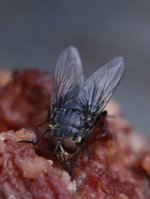Tony_InDevon
Bird Lover & People Photographer
Has anyone seen the Amateur Photography magazine issue dated 18 August '03 - Their Wildlife Special?
Eagerly flicking through I found loads of stunning photographs and eagerly settled down with a cup of coffee to increase my skills.
Then the downer …. At least half the shots are taken in zoos or birds of prey centres.
I accept that there are times when we “set-up” at shot and hope that a wild creature will fall into our trap for the shot we are hoping for (bit like rod fishing really). But to me any slides I take of captive creatures are filed under general and certainly not wildlife.
Well my feathers are definitely ruffled … but what do you think?
Eagerly flicking through I found loads of stunning photographs and eagerly settled down with a cup of coffee to increase my skills.
Then the downer …. At least half the shots are taken in zoos or birds of prey centres.
I accept that there are times when we “set-up” at shot and hope that a wild creature will fall into our trap for the shot we are hoping for (bit like rod fishing really). But to me any slides I take of captive creatures are filed under general and certainly not wildlife.
Well my feathers are definitely ruffled … but what do you think?





